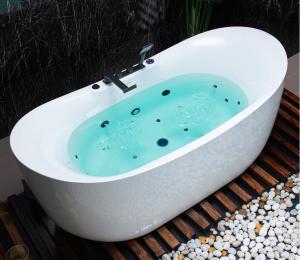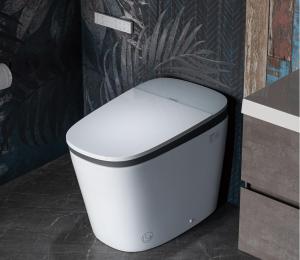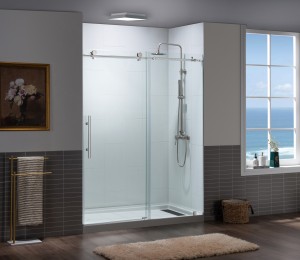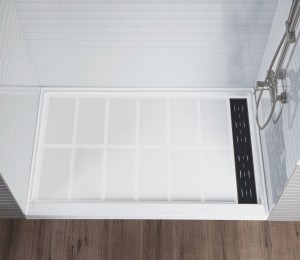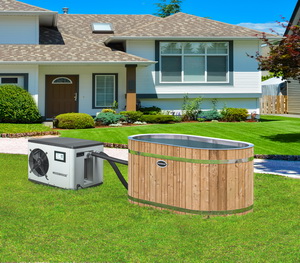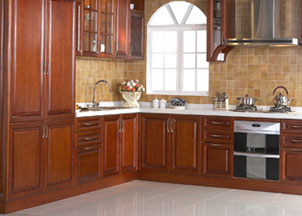Toilet Seat Turned Yellow? (Reasons Why And How To Fix It)
If you've ever looked down at your toilet seat and noticed it's turned yellow, you're not alone. This is a common problem faced by many people, but what exactly causes it and how can it be fixed?
Many people believe that urine stains are causing the yellowing of plastic toilet seats. However, the most common cause is aging. Plastic will naturally yellow over time. UV rays, harsh chemicals, extremes of temperature and humidity can speed up the rate of aging.
Ways to Prevent/Slow Yellowing in the Future
1.Avoid Direct Sunlight
Since UV rays are the biggest culprit in prematurely aging, yellowing toilet seats, avoiding direct sunlight is the best way to slow down aging and prevent yellowing.
2. Put On The Toilet Lid
One way to avoid direct sunlight without blocking it from entering the bathroom is to cover the toilet seat itself.
3. Use Harsh Chemicals Wisely
To remove yellow stains that are not age-related, lemon juice, vinegar, and other substances can still do some stain-removal but are not as intense. If you get rid of non-aging-related stains soon after they develop, the stains will have less time to penetrate the plastic and grow worse over time.
This way, you can still do the cleaning needed without chemicals that will accelerate plastic aging.
Keeping Your Shower Door Clean
Whether you choose frameless or sliding doors, glass is often the material of choice for shower enclosures. How can we keep these shower doors pristine with such constant use?
Hard water builds up over time, and soap scum can take a toll on those shiny shower doors.
What’s the best way to keep glass shower doors clean?
1.Choose Glass With A Protective Coating
Your shower door should accentuate the beautiful stonework and intricate tile designs in your bathroom, not the soap scum and mineral deposits. That's why most of our Woodbridge doors come standard with glass protection. WOODBRIDGE coating repels water and tainates, and helps protect against staining and hard water build-up . It is easier to clean and maintenance, yet maintains its high gloss, bright, shiny and clean as new even after long time.
2. Clean The Glass With A Mild Soap, Like Dish Detergent
About once a week, we recommend cleaning your shower door with a soft cloth and mild soap, such as liquid dish soap. Do not use harsh cleaners. Harsh cleaners contain toxic fumes that can make you sick and scratch glass.
3. Let The Air Circulate In The Bathroom
Open the bathroom door after you shower to allow some air to circulate, which will help the moisture evaporate. If your shower has a vent, use it. If you don't, consider installing one to help protect your shower glass and bathroom from potentially harmful mold and mildew growth.
How to Clean a Bathtub, Especially a Jetted Tub
A soak in the tub at the end of a long day can instantly make any stressor feel as light as the bubbles in the tub. However, if you don't know how to clean your tub, the dirt and soap scum surrounding it, or the mold at the caulk and grout interface will only add to your annoyance.
How often do I need to clean a jetted tub?
It all comes down to how often you use your spa, water care products, and maintenance routine. As a rough rule of thumb, we recommend cleaning the following parts:
Clean your pipes with a pipe cleaner;
Drain and refill your hot tub;
Clean the interior shell;
What do I need to clean a jetted bathtub?
White vinegar;
Baking Soda;
Dishwasher powder;
Non-Chlorine bleach;
Borax (optional);
How do I clean my Hot Tub?
1.Flush out pipes
To remove any dirt, bacteria or build-up from your pipes, wash them with Jetted Tub Pipe Cleaner before cleaning your hot tub's shell. Then, once you've finished, drain the water.
2.Drain the water
In an ideal world, you should drain the water every three months at a minimum. But, before getting started, turn your tub off at the isolator. Not doing this could damage the pump motor and filter mechanism.
3.Clean the shell and jets
After draining your hot tub, wipe away any sediments, dirt or debris with a damp cloth. We highly recommend using a surface cleaner and a soft cloth. Or, for stubborn marks, try a tub scrubber.
4.Jetted tub panels
Use a soft cloth and neutral detergent to clean the outer panels. Then, when you've finished, wipe away any residue.
Finally
Hopefully, now you know all you need to be able to keep your bathroom fresh and yellow-free!
 Shipping
Shipping
 30 Day Return & Exchange Policy
30 Day Return & Exchange Policy
 Expert Customer Service
Expert Customer Service
 Damage Compensation
Damage Compensation

